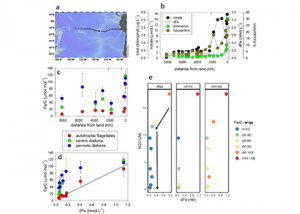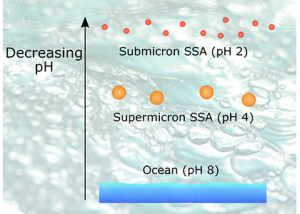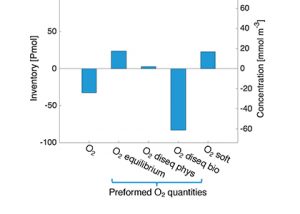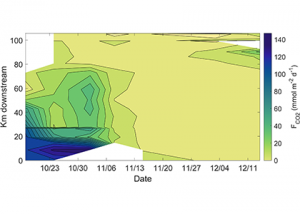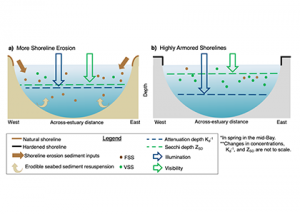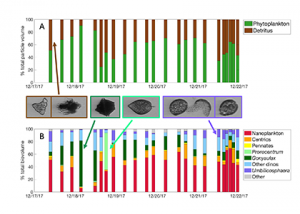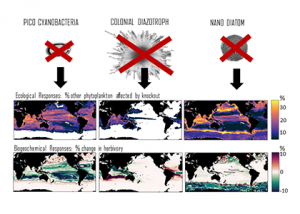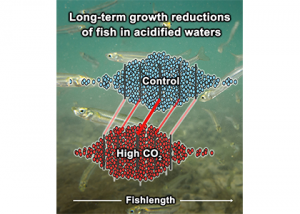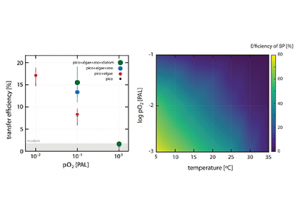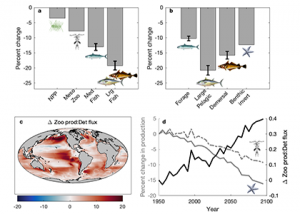If you would like to have your recent publications featured on the OCB website please contact ocb_news@whoi.edu. View our guidelines for writing a New OCB Research post.
The uptake of iron by phytoplankton is a key part of the marine iron cycle, but we still have a rudimentary understanding of the controls on this process. It is generally assumed that dissolved iron availability controls phytoplankton iron. Combining data from the GP16 GEOTRACES section and three other GEOTRACES-compliant cruises in the eastern Pacific, […]
Read MoreThe pH of aerosols controls their impact on climate and human health. Sea spray aerosols are one of the largest sources of aerosols globally by mass, yet it has been challenging to measure the pH of fresh sea spray aerosols in the past. A recent study published in PNAS measured sea spray aerosols under controlled […]
Read MoreDuring the Last Glacial Maximum (~20,000 years ago, LGM) sediment data show that the deep ocean had lower dissolved oxygen (O2) concentrations than the preindustrial ocean, despite cooler temperatures of this period increasing O2 solubility in sea water. In a study published in Nature Geoscience, the authors provide one of the first explanations for glacial […]
Read MoreThe world is getting stormier, and recent evidence shows significant impacts on coastal carbon cycling. The upticks in extreme weather events such as tropical cyclones have resulted in enhanced delivery of nutrients and organic matter across the land-ocean continuum. Lagoonal estuaries such as the Albemarle-Pamlico Sound (APS) in North Carolina and Galveston Bay in Texas […]
Read MoreAround the world, human-altered shorelines change sediment inputs to estuaries and coastal waters, altering water clarity, especially in areas of dense human population. The Chesapeake Bay estuary is recovering from historically high nutrient and sediment inputs, but water clarity improvement has been ambiguous. Long-term trends show increasing water clarity in terms of deepening light attenuation […]
Read MoreWildfire frequency, size, and destructiveness has increased over the last two decades, particularly in coastal regions such as Australia, Brazil, and the western United States. While the impact of fire on land, plants, and people is well documented, very few studies have been able to evaluate the impact of fires on ocean ecosystems. A serendipitously […]
Read MoreClimate change impacts on the ocean such as warming, altered nutrient supply, and acidification will lead to significant rearrangement of phytoplankton communities, with the potential for some phytoplankton species to become extinct, especially at the regional level. This leads to the question: What are phytoplankton species’ redundancy levels from ecological and biogeochemical standpoints—i.e. will other […]
Read MoreThe question of whether ocean acidification (OA) will impact the growth of marine fish remains surprisingly uncertain. The bulk of available evidence in the form of laboratory experiments suggests that most fish are not impacted by OA-relevant CO2 levels, but many studies suffer from the inherent methodical constraints of rearing marine fish in captivity. For […]
Read MoreThe marine biological pump (BP) plays a crucial role in regulating earth’s atmospheric oxygen and carbon dioxide levels by transferring carbon fixed by primary producers into the ocean interior and marine sediments, thereby controlling the habitability of our planet. The rise of multicellular life and eukaryotic algae in the ocean about 700 million years ago […]
Read MoreGlobal warming changes the conditions for all ocean life, with wide-ranging consequences. It is particularly difficult to predict the impact of climate change on fish because fish production is conditioned on both temperature and food resource (zooplankton and benthic organisms) changes. Climate change projections from Earth system models show a negative amplification of changes in […]
Read More
